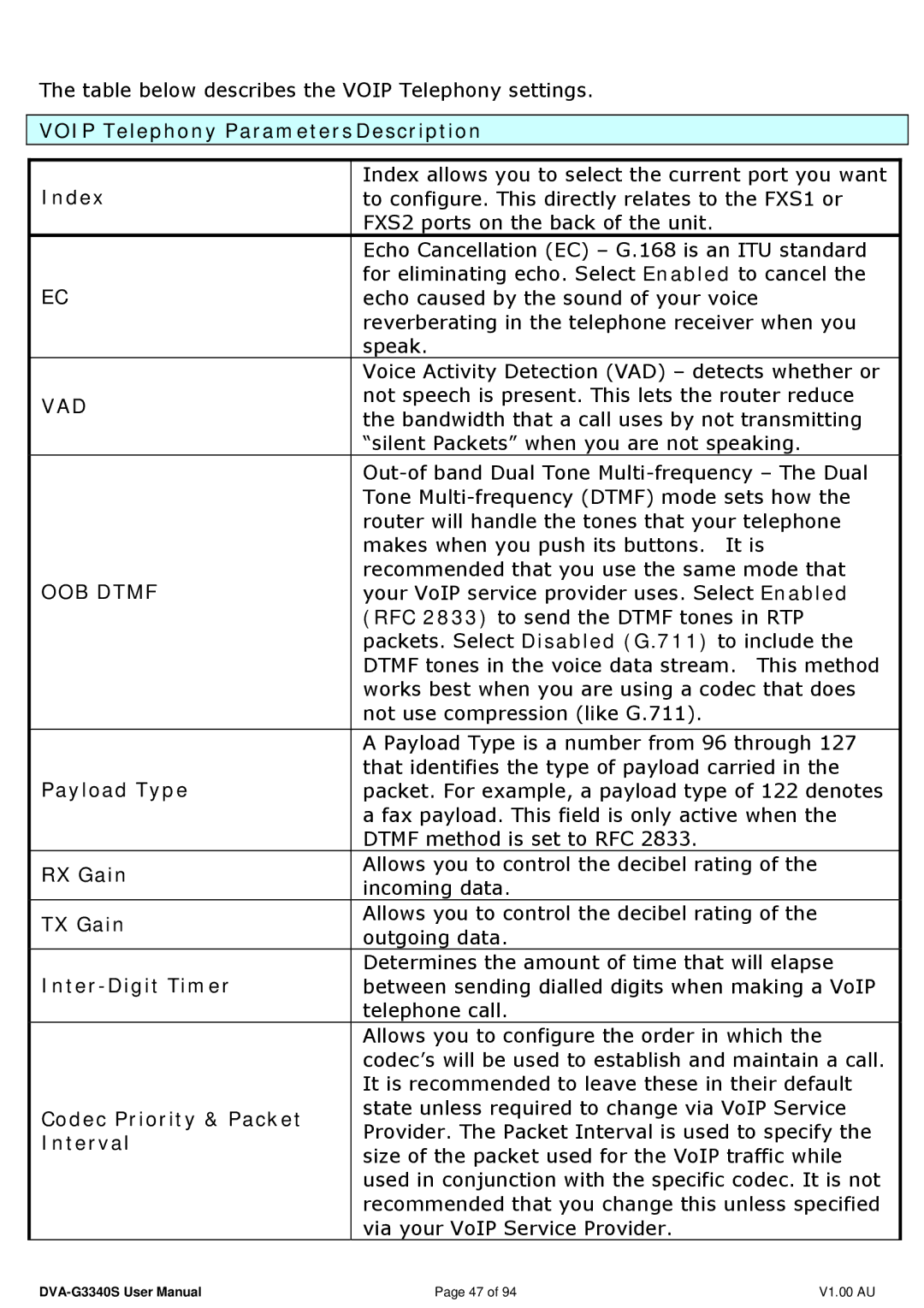The table below describes the VOIP Telephony settings.
VOIP Telephony ParametersDescription
Index | Index allows you to select the current port you want | |
to configure. This directly relates to the FXS1 or | ||
| FXS2 ports on the back of the unit. | |
| Echo Cancellation (EC) – G.168 is an ITU standard | |
EC | for eliminating echo. Select Enabled to cancel the | |
echo caused by the sound of your voice | ||
| reverberating in the telephone receiver when you | |
| speak. | |
| Voice Activity Detection (VAD) – detects whether or | |
VAD | not speech is present. This lets the router reduce | |
the bandwidth that a call uses by not transmitting | ||
| ||
| “silent Packets” when you are not speaking. | |
| ||
| Tone | |
| router will handle the tones that your telephone | |
| makes when you push its buttons. It is | |
OOB DTMF | recommended that you use the same mode that | |
your VoIP service provider uses. Select Enabled | ||
| (RFC 2833) to send the DTMF tones in RTP | |
| packets. Select Disabled (G.711) to include the | |
| DTMF tones in the voice data stream. This method | |
| works best when you are using a codec that does | |
| not use compression (like G.711). | |
|
| |
| A Payload Type is a number from 96 through 127 | |
Payload Type | that identifies the type of payload carried in the | |
packet. For example, a payload type of 122 denotes | ||
| a fax payload. This field is only active when the | |
| DTMF method is set to RFC 2833. | |
RX Gain | Allows you to control the decibel rating of the | |
incoming data. | ||
| ||
TX Gain | Allows you to control the decibel rating of the | |
outgoing data. | ||
| ||
| Determines the amount of time that will elapse | |
between sending dialled digits when making a VoIP | ||
| telephone call. | |
| Allows you to configure the order in which the | |
| codec’s will be used to establish and maintain a call. | |
| It is recommended to leave these in their default | |
Codec Priority & Packet | state unless required to change via VoIP Service | |
Provider. The Packet Interval is used to specify the | ||
Interval | ||
size of the packet used for the VoIP traffic while | ||
| ||
| used in conjunction with the specific codec. It is not | |
| recommended that you change this unless specified | |
| via your VoIP Service Provider. |
Page 47 of 94 | V1.00 AU |
